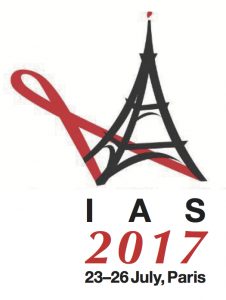Swaziland nearly halves HIV incidence in five years
10 August 2017. Related: Conference reports, Treatment access, IAS 9th Paris 2017.
 Polly Clayden, HIV i-Base
Polly Clayden, HIV i-Base
Swaziland saw a decrease in HIV incidence by almost half and a doubling of viral load suppression among adults, between 2011 and 2016, according to data from a population based survey presented at IAS 2017.
Swaziland has the highest national HIV prevalence in the world: 32% among a population of 1,451,428 in 2011 as measured by its first door-to-door testing survey.
In response, the Swazi government vastly expanded national HIV prevention and treatment services. Since 2011 the country has rapidly adopted new ART guidelines, now including treat all and nurse-led ART initiation as well as the promotion of HIV prevention services.
Between 2011 and 2016 the annual number of HIV tests increased from 180,433 to 410,947; the annual number of people starting ART increased from 14,184 to 22,554, the total number of people on ART from 72,402 to 171,266 and the number of men who had medical circumcision from 38,106 to 93,357.
In 2016–2017 the country conducted the Second Swaziland HIV Incidence Measurement Survey (SHIMS2) – a population-based HIV impact assessment (PHIA) among a nationally representative sample of the population age 15 years and above. The objective was to estimate HIV incidence and to estimate population viral load suppression (<1000 copies/mL).
This was a cross-sectional, two-stage cluster sample of 286 districts. A total of 6417 households were offered testing. People who consented to testing within the households had an HIV rapid test and a point-of-care CD4 test if they tested positive.
All HIV positive samples were tested for viral load and limiting antigen avidity (130 days) at a central laboratory. Results were compared with those from the 2011 survey.
The household response rate was 84% and 10,934 adults were tested. 2016–2017 results showed HIV prevalence to be stable since 2011: respectively 30.5 vs 32.1% overall, p=0.103; 24.1 vs 21.2% for men and 38.1 vs 38.8% for women.
But HIV incidence decreased by 44% overall, from 2.5 to 1.4%, p=0.012; 1.8 to 0.9% in men and 3.2 to 2.0 in women.
Overall viral load suppression more than doubled between 2011 and 2016–2017: from 34.8 to 71.3%, p=0.0001; 32.7 vs 63.0% in men and 35.9 vs 75% in women.
More women than men were diagnosed with HIV in 2016–2017: 88.6 vs 77.5%. Older people (25 years and over) were more likely to know their status: 87.1 vs 66.1%.
90-90-90 achievements were 85-87-92 overall.
Comment
Good news from Swaziland, which provoked much well-deserved applause from the audience.
This was the first direct measure of the national impact of five years of expanded HIV services, particularly ART coverage, on HIV incidence.
Swaziland is making continued efforts to reach and engage men and young women in order to achieve 90-90-90 targets across all populations.
Reference:
Nkambule R et al. Substantial progress in confronting the HIV epidemic in Swaziland: first evidence of national impact. IAS 2017. 23–26 July 2017. Paris. Oral abstract MOAX0204LB.
http://programme.ias2017.org/Abstract/Abstract/5837 (abstract)

